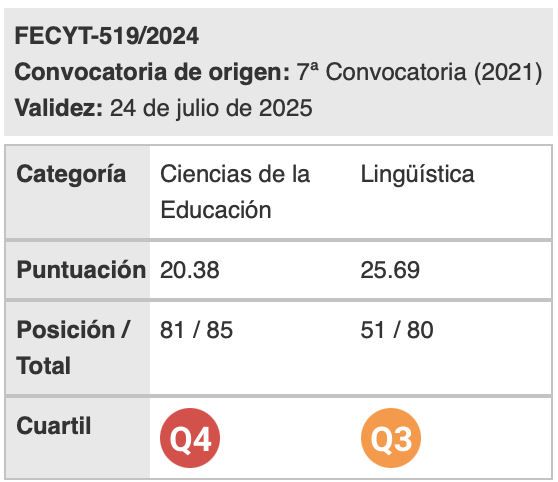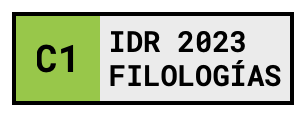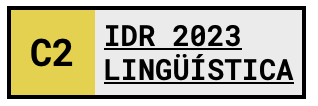The building: the problem-solving product of the construction discipline
Palabras clave:
roblem-Solution pattern, building, disciplinary discourseResumen
The Problem-Solution pattern has been widely considered a key discourse- organizing resource in technical discourse (Hoey, 1983, 2001). This paper aims at exploring the role of the pattern in a corpus of construction engineering textbooks. The paper contends that use of the pattern facilitates the introduction of specialized knowledge, scaffolded by means of lexical resources which allow the reader to recognize and interpret the staging of the pattern. The analysis centers on the building, as it is the main product and the process of the construction profession, and more particularly on how disciplinary discourse is constructed around the problems that affect the building. Findings show that the textual use of the Problem-Solution pattern is closely connected to the pragmatic problem- solving nature of the engineering discipline. The social dimension of this discipline is textualized in their concern to analyze the cause and the effect of the building problems for which adequate solutions should be provided. Drawing on the perspective of applied discourse analysis (Bhatia, 2004), the paper finally discusses the textual use of the lexico-grammatical, semantic and rhetorical resources of the pattern in the light of the specific professional culture and disciplinary community practices in which the text is produced. l
Descargas
Citas
Archer, A. (2008). ‘The place is suffering’: Enabling dialogue between students’ discourses and academic literacy conventions in engineering. English for Specific Purposes, 27(3), 255–266. doi: 10.1016/j.esp.2007.10.002.
Artemeva, N., Logie, S., & St-Martin, J. (1999). From page to stage: How theories of genre and situated learning help introduce engineering students to discipline-specific communication. Technical Communication Quarterly, 8(3), 301–316. doi: 10.1080/10572259909364670.
Askehave, I., & Swales, J. M. (2001). Genre identification and communicative purpose: A problem and a possible solution. Applied Linguistics, 22(2), 195–212. doi: 10.1093/applin/22.2.195.
Bazerman, C., & Paradis, J. (1991). Introduction. In C. Bazerman & J. Paradis (Eds.), Textual dynamics of the professions: Historical and contemporary studies of writing in professional communities (pp. 3–10). Madison, WI: University of Wisconsin Press.
Becher, T., & Trowler, P. R. (2001). Academic tribes and territories: Intellectual enquiry and the culture of disciplines. Buckingham: The Society for Research into Higher Education & Open University Press.
Berkenkotter, C., & Huckin, T. N. (1995). Genre knowledge in disciplinary communication. Hillsdale, NJ: Lawrence Erlbaum Limited.
Bhatia, V. K. (2002). A generic view of academic discourse. In J. Flowerdew (Ed.), Academic discourse (pp. 21–39). London: Longman.
Bhatia, V. K. (2004). Worlds of written discourse: A genre-based view. London, New York: Continuum.
Bhatia, V. K. (2008). Genre analysis, ESP and professional practice. English for Specific Purposes, 27(2), 161–174. doi: 10.1016/j.esp.2007.07.005.
Bierig, A. (2009, June). The iconic Lib House finds a new home up the coast. The Architectural Record, 104–105.
Caballero-Rodríguez, R. (2003). Metaphor and genre: The presence and role of metaphor in the building review. Applied Linguistics, 24(2), 145–167. doi: 10.1093/applin/24.2.145.
Candlin, C. N., & Hyland, K. (1999). Introduction: Integrating approaches to the study of writing. In C. N. Candlin & K. Hyland (Eds.), Writing: Texts, processes and practices (pp. 1–17). London: Longman.
Crombie, W. (1985). Discourse and language learning: A relational approach to syllabus design. Oxford University Press.
Dlaska, A. (1999). Suggestions for a subject-specific approach in teaching foreign languages to engineering and science students. System, 27(3), 401–417. doi: 10.1016/S0346-251X(99)00034-2.
Dong, A. (2007). The enactment of design through language. Design Studies, 28(1), 5–21. doi:10.1016/j.destud.2006.07.001.
Flowerdew, L. (2003). A combined corpus and systemic-functional analysis of the problem-solution pattern in a student and professional corpus of technical writing. TESOL Quarterly, 37(3), 489–511. Retrieved from: http://www.ingentaconnect.com/content/tesol/.
Forty, A. (2000). Words and buildings: A vocabulary of modern architecture. London: Thames & Hudson.
Hoey, M. (1983). On the surface of discourse. London: George Allen & Unwin. Hoey, M. (2001). Textual interaction: An introduction to written discourse analysis.
London: Routledge.
Hyland, K. (2000). Disciplinary discourses: Social interactions in academic writing. Harlow: Pearson Education Limited.
Hyland, K. (2003). Genre-based pedagogies: A social response to process. Journal of Second Language Writing, 12(1), 17–29. doi: 10.1016/S1060-3743(02)00124-8
Ivy, R. (2009, March). Editorial: Making the most of it. The Architectural Record, 19. Jordan, M. P. (1980). Short texts to explain problem-solution structures – and
vice versa. Instructional Science, 9(3), 221–252. doi: 10.1007/BF00177328.
Koutsantoni, D. (2006). Rhetorical strategies in engineering research articles and research theses: Advanced academic literacy and relations of power. Journal of English for Academic Purposes, 5(1), 19–36. doi: 10.1016/j.jeap.2005.11.002.
Lawson, B. (2006). How designers think. The design process demystified. Oxford: Architectural Press.
Markus, T., & Cameron, D. (2002). The words between the spaces: Buildings and language. London: Routledge.
Martin, J. R., & White, P. R. R. (2005). The Language of evaluation. Appraisal in English. London & New York: Palgrave Macmillan.
McKenna, B. (1997). How engineers write: An empirical study of engineering report writing. Applied Linguistics, 18(2), 189–211. doi:10.1093/applin/18.2.189.
Medway, P. (1994). The language component in technological capability: Lessons from architecture. International Journal of Technology and Design Education, 4(1), 85–107. doi: 10.1007/BF01197585.
Myers, G. (1992). Textbooks and the sociology of scientific knowledge. English for Specific Purposes, 11(1), 3–17. doi: 10.1016/0889-4906(92)90003-S.
Parkinson, J., & Adendorff, R. (2004). The use of popular science articles in teaching scientific literacy. English for Specific Purposes, 23(4), 379–396. doi: 10.1016/j.esp.2003.11.005.
Pearson, C. (2009, June). Rebooting yesterday’s buildings for today’s world. The Architectural Record, 61.
Pérez-Llantada, C. (2003). Social pragmatics in technical writing: A corpus- based analysis of thematic articles. Ibérica, 5, 19–34. Retrieved from: http:// aelfe.org.
Roldán-Riejos, A. M. & Úbeda-Mansilla, P. (2006). Metaphor use in a specific genre of engineering discourse. European Journal of Engineering Education, 31(5), 531–541. doi: 10.1080/03043790600797145.
Swales, J. M. (1990). Genre analysis. English in academic and research settings. Cambridge: Cambridge: University Press.
Úbeda-Mansilla, P. (2003). Metaphor at work: A study of metaphors used by European architects when talking about their projects. Ibérica, 5, 35–48. Retrieved from: http://aelfe.org.
Winter, E. O. (1982). Towards a contextual grammar of English: The clause and its place in the definition of sentence. London: George Allen and Unwin.
Descargas
Publicado
Cómo citar
Número
Sección
Licencia
Aquellos autores/as que tengan publicaciones con esta revista, aceptan los términos siguientes:
- Los autores/as conservarán sus derechos de autor y garantizarán a la revista el derecho de primera publicación de su obra, el cuál estará simultáneamente sujeto a la Licencia de reconocimiento de Creative Commons que permite a terceros compartir la obra siempre que se indique su autor y su primera publicación esta revista.
- Los autores/as podrán adoptar otros acuerdos de licencia no exclusiva de distribución de la versión de la obra publicada (p. ej.: depositarla en un archivo telemático institucional o publicarla en un volumen monográfico) siempre que se indique la publicación inicial en esta revista.
- Se permite y recomienda a los autores/as difundir su obra a través de Internet (p. ej.: en archivos telemáticos institucionales o en su página web) antes y durante el proceso de envío, lo cual puede producir intercambios interesantes y aumentar las citas de la obra publicada. (Véase El efecto del acceso abierto).

Revista de Lenguas para fines específicos is licensed under a Creative Commons Reconocimiento-NoComercial-SinObraDerivada 4.0 Internacional License.






















